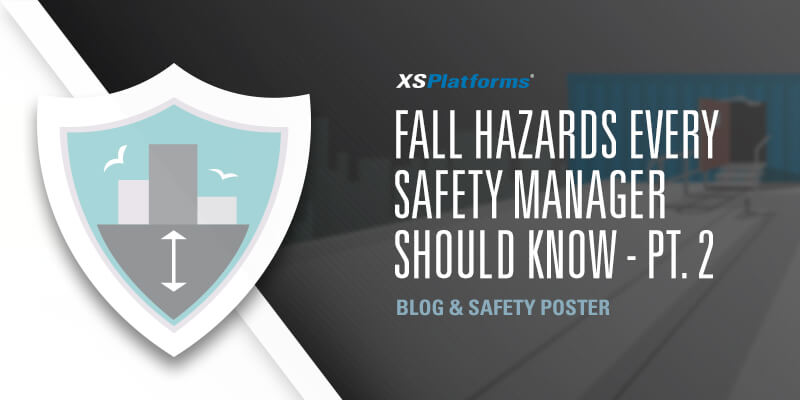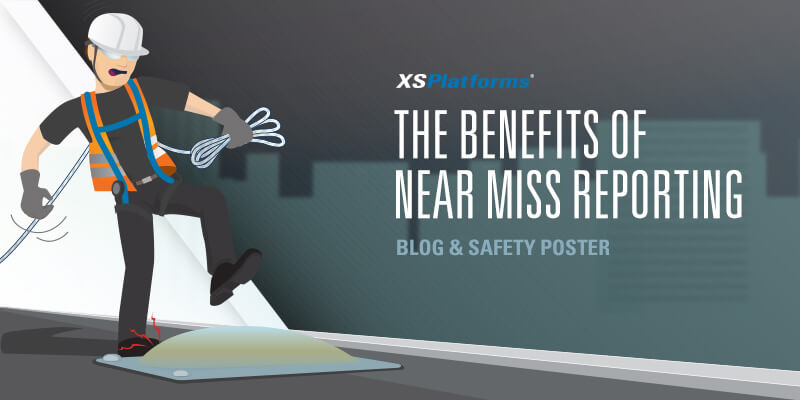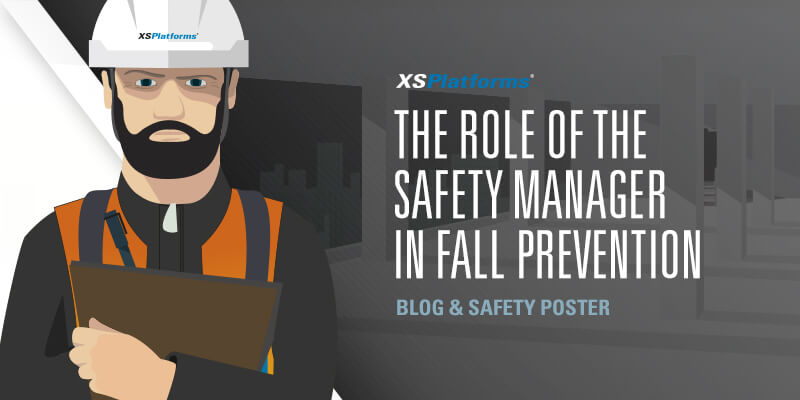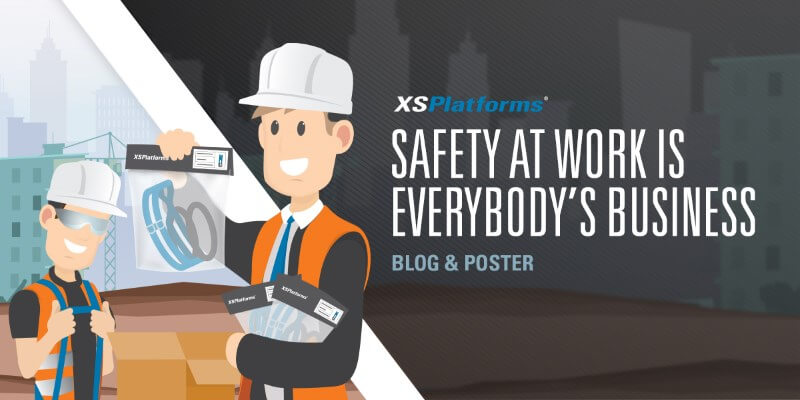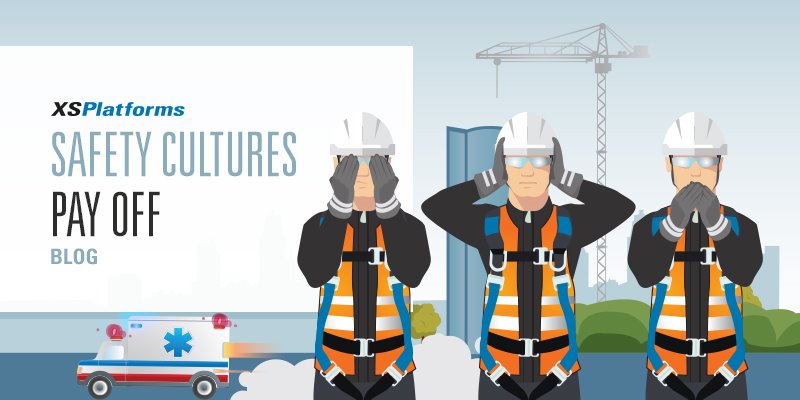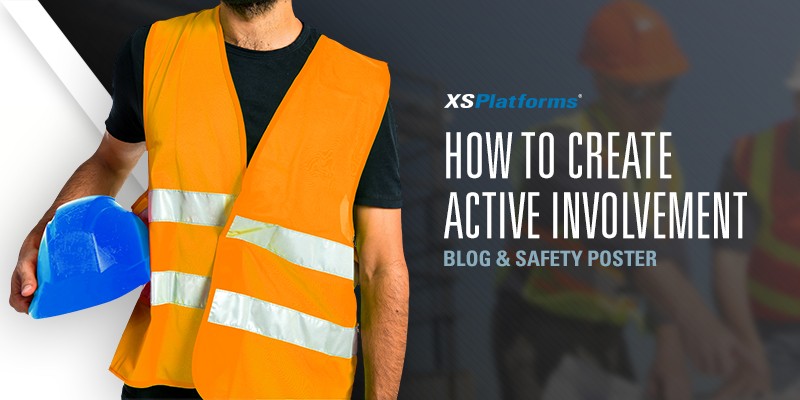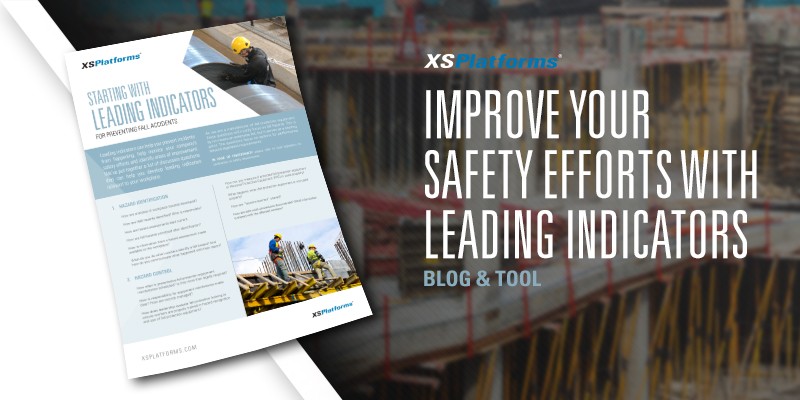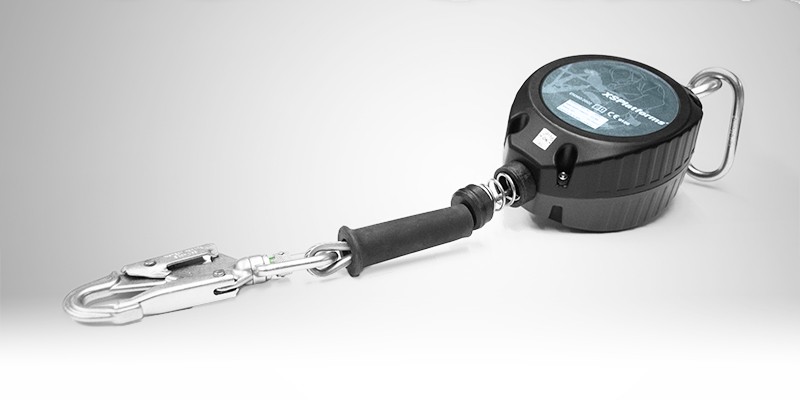
In our series of blogs about replacing Personal Protective Equipment (PPE) for fall protection, we have come to the second part. After describing different factors that affect the safety of a full body harness, we will now address when an automatic fall arrest device has to be taken out of service.
Automatic fall arrest device
Also referred to as a self-retractable lanyard or self-retracting lifeline. Although its name varies among manufacturers and resellers, its design and function are the same:
An automatic fall arrest device exists of a hard (polymer) casing that holds a certain length of webbing (or wire rope). The webbing is connected to a snap hook that is connected to the harness of a worker. By walking further away from the fall arrest device, the device unrolls the webbing until it runs out.
The device automatically retracts the webbing, so when the worker comes closer again it rolls up the webbing. This makes sure that the webbing is always taut and excess webbing doesn’t hinder the worker. The most important feature of this equipment is that it works like a seatbelt when a fall occurs. When a sudden acceleration takes place (a fall), the fall arrest device blocks immediately, stopping the fall within a fraction of a second.
To reduce the impact of the forces to the body when a fall is arrested, the automatic fall arrest device is equipped with built-in or external energy absorbers. Also, the snap hook at the attachment end is often equipped with a fall indicator that is triggered when a fall is arrested.
In what situations is an automatic fall arrest device used?
In general, an automatic fall arrest device is used for situations where workers use an overhead fall protection system or overhead anchor point, because the fall arrest device minimizes the fall distance by the immediate fall arrest when a fall occurs. But, in some cases, they’re also used in horizontal fall protection systems.
When to use an automatic fall arrest device?

Just as all fall protection PPE, an automatic fall arrest device needs to be checked before each use. During this check, multiple damages or deformations may indicate that the safety of the equipment is compromised. This means that it has to be checked by a competent person to determine whether it’s safe to use again or it has to be taken out of service immediately.
In the next section, we will provide a number of indications that an automatic fall arrest device might not be safe to use any more. Note that the possible damages or deformations to this type of equipment are not limited to what we outline in this article. If you have any doubt about the safety of equipment, always report this and have someone investigate your findings.
Activation of the fall indicator
One of the most obvious indications that the safety of the automatic fall arrest device is compromised, is the activation of the fall indicator on the snap hook.
The fall indicator is a colored part at the attachment point of the snap hook. When it’s not activated, a green color is showing to point out it’s safe to use the equipment. After a fall has been arrested and the indicator is activated by the forces, a red colored piece is visible. In this case, the equipment has been subject to a fall and needs to be checked thoroughly by a competent person whether it can be used again or needs to be replaced.

Assess hardware and casing

Check for severe pollution

Check the fall indicator
Tensioning and braking mechanism
Other very important mechanisms that have to function properly in order to work safely with an automatic fall arrest device are the self-retracting (tensioning) mechanism and the braking mechanism.
When the self-retracting mechanism doesn’t function properly, there is a danger that the webbing or wire rope will sag when the worker moves closer to the equipment again. As a result, the device will not block immediately when a fall occurs and the fall distance may be significantly longer, possibly causing serious injuries.
Obviously, a properly working braking mechanism is essential for safe use of an automatic fall arrest device. This has to be tested prior to each use by pulling the webbing firmly downward when holding the casing. Pull until the brake engages without slipping and release, so the webbing retracts back in the casing.
In case one of the two functions don’t work properly, remove the device out of service!
Other factors that may affect the safety of an automatic fall arrest device
An automatic fall arrest device is a relatively heavy type of equipment that can be accidentally dropped, resulting in damages. Although it might look okay and safe from the outside, internal (damage to the brake for example) or small damages may occur after a period of extensive use.
The casing might start to show cracks, the wire rope or webbing can be damaged, connectors may not close or lock properly any more, etc. That’s why it’s of great importance that an automatic fall arrest device is checked thoroughly before each use.
If there exists any doubt of the equipment being safe to use, immediately take it out of service and have a competent person check it.
Annual inspection of PPE
Just as all PPE, the automatic fall arrest device must be checked and re-certified annually to guarantee safe use. This check needs to be done by a competent person, who is trained and certified to perform such checks.
Partners of XSPlatforms offer various maintenance contracts to check fall protection and PPE for any damages or other factors that affect its safety.
Inspection poster for an automatic fall arrest device
We have created a poster with several elements of an automatic fall arrest device that have to be checked by workers, before EACH use. When they follow the instructions, they are able to spot possible factors that affect the safety of the equipment. As a result, dangerous situations may be prevented.
The poster is free to download. Print and hang the poster visibly near storage of the PPE or the location where PPE is put in use.



